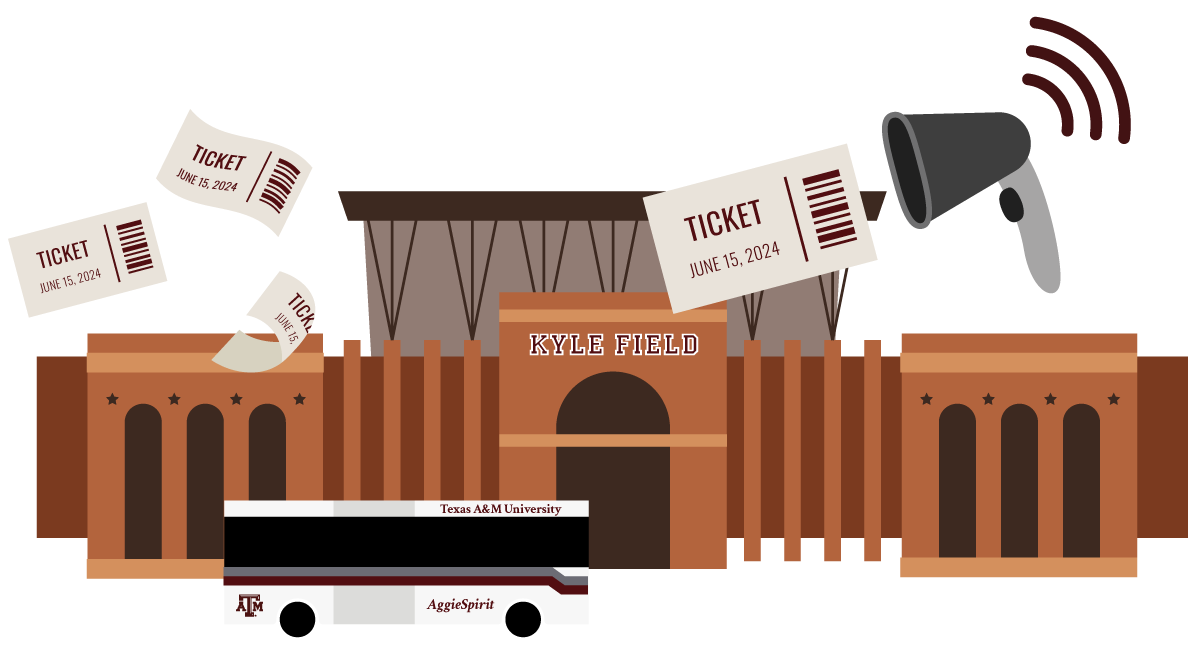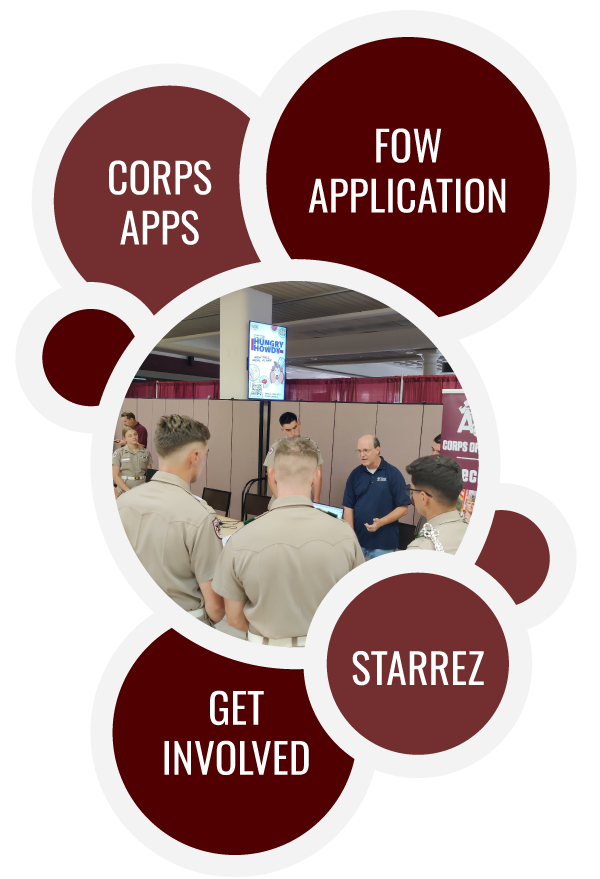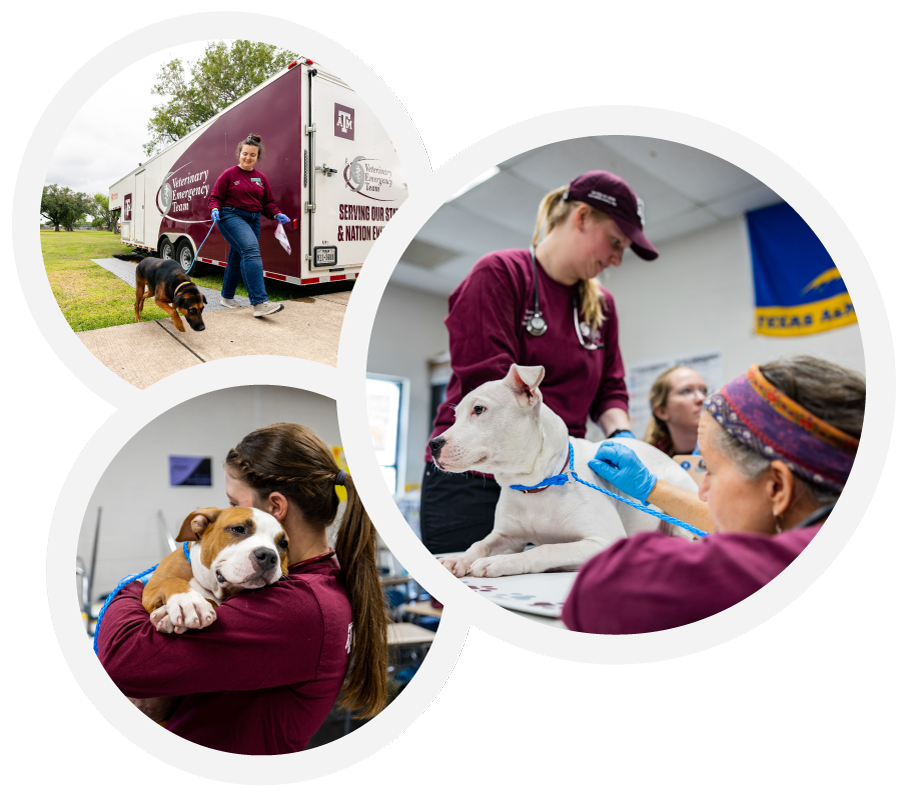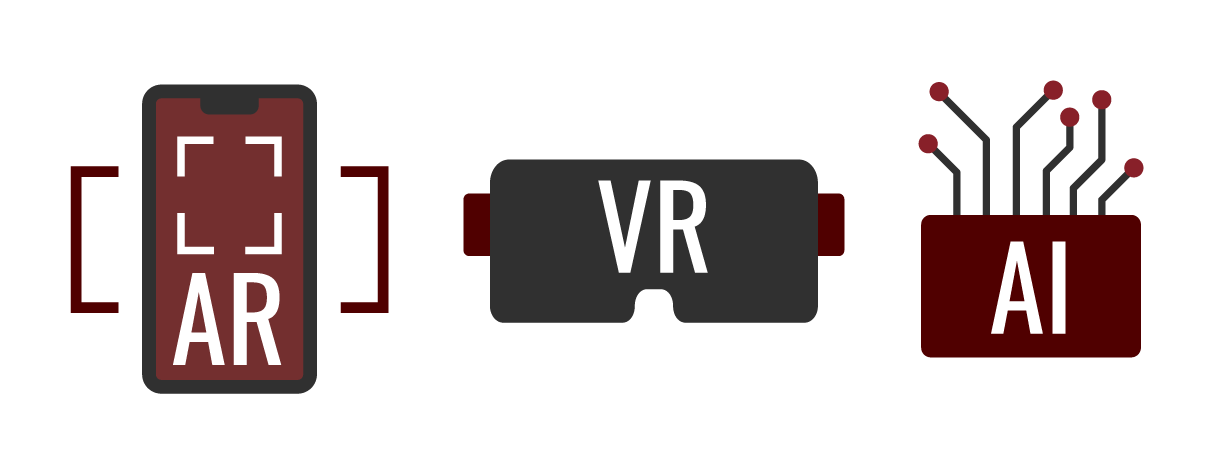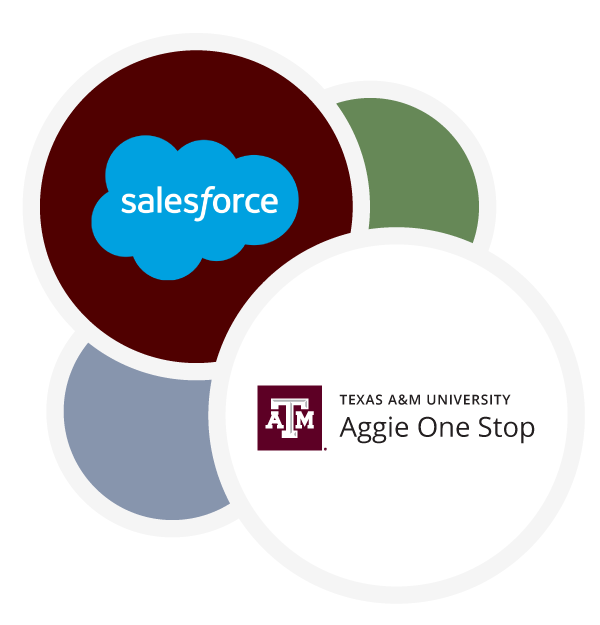Empowering Success
Loyalty, Respect
Technology Services empowers the campus community by aiding operations such as enhancing the student experience, equipping cutting-edge labs and classrooms and ensuring seamless emergency response.
Texas A&M's Private Network Fuels Research, Events, and Operations
Texas A&M University's new private cellular network is transforming both academic research and campus operations. Using a licensed 2.5 GHz spectrum, the network operates independently from traditional cellular carriers, providing dedicated, high-speed coverage over a 1-2 mile radius. This infrastructure is already proving valuable in three key areas: academic research, autonomous vehicle technology and large-scale event management.
1. Supporting Large-Scale Events such as the George Strait Concert
The network has also proven valuable for managing large-scale events. During the George Strait concert at Kyle Field, which hosted over 110,000 attendees, the private network was used to streamline logistics and improve operations. It facilitated everything from transportation to ticket scanning, ensuring a smooth experience for concert-goers. This illustrates the network's adaptability for large events, where reliable connectivity is essential.
2. Advancing Research with Autonomous Vehicles
One of the most significant applications of the network is supporting research in autonomous vehicles. These vehicles rely on on-board sensors to detect their surroundings, but their range is limited. By integrating smart infrastructure — such as light pole-mounted cameras and cutting edge computing systems — the network extends sensor coverage and improves situational awareness. This setup helps vehicles avoid obstacles and pedestrians, enhancing safety and enabling real-time incident avoidance. The network's low latency and high bandwidth are essential for the successful operation of these autonomous systems.
3. Enabling Remote Control of Unmanned Ground Vehicles
Another innovative use of the network involves remote control of unmanned ground vehicles (UGVs). For example, during a recent experiment, a Jackal UGV was controlled from the Wisenbaker Engineering Building, a mile away from its test site. The network enabled operators to receive real-time video and laser scan data, allowing precise navigation and obstacle avoidance. This setup demonstrates the network's ability to support low-latency, high-bandwidth applications crucial for responsive UGV operations, utilizing a licensed private network to enable seamless communication between the UGV and the control center at Texas A&M.
Our private cellular network's capability to enable low-latency, high-reliability remote vehicle operation is a game-changer. This technology paves the way for advancements in hazardous environment operations and efficient transportation systems, significantly enhancing both research and practical applications.
- Dr. Srinivas Shakkottai, Professor in the Department of Electrical and Computer Engineering
Looking ahead, Texas A&M's private cellular network promises to drive further advancements in research, operations and event management, positioning the university as a leader in higher education technology.
Fostering Collaboration and Innovation: Technology Services' Impact on Corps Freshman Orientation and Student Development
Technology Services worked with the Division of Student Affairs to support Freshman Orientation Week (FOW) for the Corps of Cadets. The successful events, held on Aug. 7 and 10, welcomed new cadets to campus and provided them with a seamless introduction to the university's technology, showcasing the power of cross-departmental collaboration and a commitment to enhancing the student experience.
Streamlining Check-In with Seamless Technology Integration
The FOW events for the Corps of Cadets rely on several key applications to manage check-ins, track cadet movements and ensure smooth operations. Technology Services facilitated the successful deployment of four essential tools: the FOW application, Get Involved, Corps Apps and StarRez. Each of these tools is integral to the orientation process, allowing staff to efficiently manage cadet data, track progress and communicate in real-time.
David Swanson, IT Technology Manager, led the training of a group of cadets, known as a cadre, to take charge of the check-in process. This included practice sessions to ensure the cadets were prepared for a smooth and efficient onboarding experience. For the first time, the check-in process was fully student-led, underscoring the importance of student empowerment and technology's role in facilitating it.
Technology in Action: How the Applications Support FOW
The FOW application is central to managing cadet check-ins, tracking their status at various stations and providing real-time updates to staff. It ensures that cadets who may not have reported on time are identified, and helps track the overall progress of orientation activities. As freshmen complete check-in, their data is then transferred into Corps Apps, which serves as an ongoing management tool for cadet information throughout their time at Texas A&M.
In addition, StarRez, a housing management application, integrates with the FOW system to provide real-time updates on housing assignments. This integration allows for last-minute housing changes to be made on the fly, ensuring that the needs of cadets are met efficiently and effectively during the check-in process.
Corps Apps, the flagship tool for cadet management, supports cadets beyond orientation and throughout their entire university journey. The app tracks cadet rank, organization and special units such as the Fightin' Texas Aggie Band and the Fish Drill Team. It also helps manage requests for leave, track fitness metrics, monitor discipline and appeals and serve as a comprehensive resource for all cadet-related activities.
Further Enhancing Student Engagement with Get Involved
Another cornerstone of student engagement is Get Involved, a software web application that gives both students and the Division of Student Affairs the ability to manage student organizations to support student development. Since moving this important platform into a new architecture with enterprise-class support, Technology Services has continued to expand and enhance Get Involved functionality. In 2024, Technology Services successfully transitioned 1,243 Recognized Student Organizations from StuAct Online into the upgraded Get Involved platform. The new platform has also saved the university approximately $50,000 per year by replacing MaroonLink as the event management application for student organizations while enabling more sophisticated features, including real-time event analytics and demographic reports.
Additional in-progress features include enhancements to email notifications and integration of an AI Student Organization recommendation engine. Future development for Get Involved includes travel, training integration and leadership. These new and upcoming enhancements contribute to the advancement of Get Involved as a central application for the full student organization experience.
Dedicated to a Greater Purpose
These accomplishments were made possible through the collaboration of multiple teams across the university. The seamless integration of technology into campus events and student services demonstrates the ongoing commitment to providing a world-class experience for Texas A&M students.
The collaborative efforts also highlight the importance of teamwork across departments, where knowledge-sharing, adaptation and student-focused solutions come together to create meaningful and lasting impacts. From the Corps of Cadets' first impressions during orientation to the ongoing management of student organizations, these technology initiatives foster a connected, engaged and empowered student body, showing dedication to a greater purpose at the university.
Enhancing Disaster Response Preparedness from Wildfires to Border Health
Technology Services supported Texas A&M's Veterinary Emergency Team (VET) during the annual Operation Border Health Preparedness (OBHP) event, held July 22-26, 2024, in Raymondville, Texas. As the state's largest disaster preparedness exercise, OBHP brought together emergency response teams statewide. The VET team provided essential veterinary care to underserved communities, treating 950 pets and delivering over 4,500 services.
Mobile internet solutions installed in VET's trailers allowed veterinarians to access necessary tools and equipment, ensuring efficient operations and high-quality care.
Reflecting on the collaborative success, Mitch Wittneben, Assistant Vice President for IT Academic Operations, said, "The dedication and teamwork displayed by everyone involved were truly inspiring. We are honored to partner with VetMed to explore innovative ways to enhance service delivery to first responders and disaster-affected individuals."
The VET's partnerships with professional staff like the Technology Services team is vital to our success in serving communities in need. The mobile internet solutions that Technology Services installed allowed our team to work more efficiently, which ultimately made our efforts more effective at OBHP. We cannot thank Technology Services enough for their support of the VET and our service mission.
- Dr. Deb Zoran, VET director
Technology Services and VET IT teams also assisted critical response teams by ensuring technology readiness during Texas' largest wildfire in history which burned more than 1,500 square miles of rangeland in the Panhandle northeast of Amarillo in February and March 2024. They prepared essential laptops by reimaging and testing them, making sure they were set up with the necessary applications for deployment in the field. Team members provided on-site IT support during the wildfire response by setting up network equipment, including switches, routers and Starlink satellite systems, marking the first use of Starlink, providing reliable connectivity in remote areas. They also reconfigured the operating system of the laptops, enabling local logins through Intune, allowing responders who were not affiliated with the university or hospital such as volunteers or local providers to access and use the necessary technology for coordination and response. These collaborative efforts ensured that the disaster response teams had the tools needed to manage the situation effectively, even in remote, resource-limited environments. Dr. John R. August, the Carl B. King Dean of Veterinary Medicine, extended his gratitude to Technology Services for their role in enhancing their operational capabilities at the most critical moments.
Technology Services Supports Build of First-Ever Virtual Production Institute
Technology Services provided infrastructure support to the College of Performance, Visualization & Fine Arts during the installation and build-out of the Texas A&M Virtual Production Institute (VPI) in College Station and its extension in Fort Worth. The VPI is the first of its kind, a large-scale production studio which includes mixed reality environments, technology-infused classrooms and high-performance computing and instrumentation to support performance capture. This state-of-the-art facility enables researchers, students and industry professionals to explore virtual production, integrate real-world scenarios and advance problem-solving across multiple industries. Students will gain hands-on experience with XR technologies — such as augmented and virtual reality, AI, real-time 3D graphics and simulation — preparing them for careers in Texas' growing job market.
This infrastructure is central to Texas A&M's mission of fostering interdisciplinary collaboration, enabling a wide range of XR-related research, training and industry partnerships. As the Virtual Production Institute continues to grow, Technology Services will remain a key enabler of its success, driving the infrastructure and connectivity that empower the next generation of creative professionals and researchers in the field of extended reality.
Collaboration at Work: Technology Services Supports Aggie One Stop Salesforce Migration
Texas A&M University's Aggie OneStop, a critical service hub for students, faculty and staff, recently migrated to Salesforce to streamline operations and enhance user experiences. Technology Services played a pivotal role in this migration, ensuring the transition was seamless, secure and scalable for future growth.
Designing a Scalable Salesforce Instance
Technology Services was tasked with designing a Salesforce instance for Aggie One Stop that would avoid conflicts with future Salesforce projects across the university. This design ensures that Aggie OneStop's Salesforce instance operates independently while allowing for future integrations with other university services.
Technology Services integrated Single Sign-On (SSO) with Entra ID, allowing users to authenticate with their NetID credentials, simplifying access and enhancing security across Aggie One Stop. They also automated account provisioning and removal based on department, employment status and access to Aggie OneStop resources in Banner, streamlining access control.
By designing a flexible Salesforce instance, integrating Single Sign-On for seamless access and automating account provisioning and removal, Technology Services has enhanced the user experience for students, faculty and staff. Their forward-thinking approach ensures that Aggie One Stop's platform can continue to evolve alongside Texas A&M University's growing use of Salesforce, supporting the institution's long-term goals.
